India is home to a diverse range of wildlife, and there are numerous wildlife safari destinations where you can witness these incredible creatures in their natural habitats. Here are 15 popular wildlife safari destinations in India:
Jim Corbett National Park, Uttarakhand
Exploring the Wilderness: Jim Corbett National Park, Uttarakhand
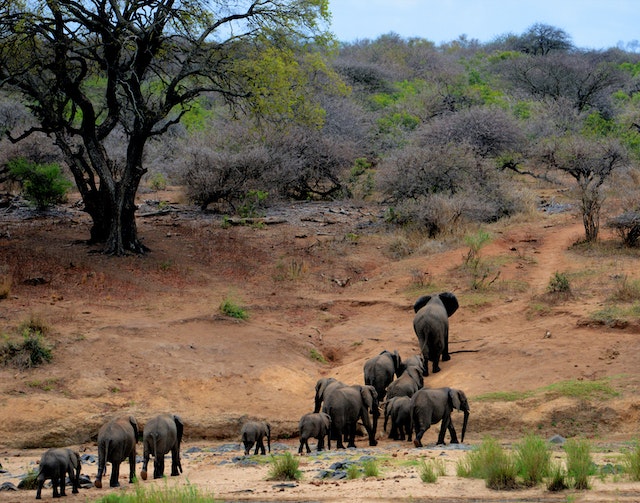
Nestled in the foothills of the Himalayas in the northern state of Uttarakhand, India, lies the enchanting Jim Corbett National Park. Named after the legendary British hunter-turned-conservationist, Jim Corbett, this national park is not only a haven for wildlife enthusiasts but also a testament to the beauty and biodiversity of the Indian subcontinent.
A Wildlife Sanctuary with a Storied Past
Jim Corbett National Park, established in 1936 as Hailey National Park, holds the distinction of being India’s oldest national park. It was renamed in honor of Jim Corbett, whose pioneering efforts in wildlife conservation and the preservation of Bengal tigers earned him recognition worldwide.
This vast expanse of wilderness covers an area of approximately 520 square kilometers in the Nainital district of Uttarakhand and is part of the larger Corbett Tiger Reserve. The park, flanked by the Ramganga River to the west and the Kosi River to the east, offers a diverse and picturesque landscape, from lush green forests to open grasslands.
A Biodiversity Hotspot
One of the primary reasons visitors flock to Jim Corbett National Park is its incredible biodiversity. The park is home to a wide variety of flora and fauna, making it a paradise for nature lovers and wildlife photographers.
Majestic Tigers: Jim Corbett National Park is renowned for its tiger population, and spotting these magnificent creatures in their natural habitat is a thrilling experience. Apart from tigers, the park shelters leopards, jungle cats, and fishing cats, making it a big cat lover’s dream destination.
Feathered Friends: The park boasts an impressive avian population, with over 600 species of birds. From the vibrant plumage of kingfishers to the elusive appearance of the great hornbill, birdwatchers will find Jim Corbett a haven for their hobby.
Spectacular Elephants: Herds of Asian elephants gracefully amble through the park’s forests, adding an element of grandeur to the landscape. These gentle giants are a common sight during safaris.
Rich Diversity: The park is also home to a diverse array of animals, including sambar deer, barking deer, spotted deer, wild boars, and langur monkeys, among others. Crocodiles, gharials, and a variety of fish can be seen in the rivers and water bodies within the park.
Exploring the Wilderness
To truly experience the magic of Jim Corbett National Park, visitors can embark on safari adventures in different zones of the park:
- Dhikala Zone: Known for its picturesque landscapes and abundant wildlife, the Dhikala Zone is a popular choice. The Dhikala Forest Rest House is a great place to stay while exploring this area.
- Jhirna Zone: This zone offers an excellent opportunity to spot leopards and sloth bears. It’s open year-round and is a favorite among birdwatchers.
- Bijrani Zone: With its lush greenery and varied wildlife, Bijrani is a favored destination for wildlife enthusiasts.
- Durga Devi Zone: Ideal for those seeking solitude and a chance to explore the less-traveled parts of the park.
- Corbett Landscape Zone: The buffer zone surrounding the core areas offers excellent wildlife sightings.
- Sonanadi Wildlife Sanctuary: A part of the larger Corbett Tiger Reserve, this sanctuary is known for its pristine wilderness.
Preservation and Conservation
Jim Corbett National Park is not just a playground for wildlife enthusiasts but also plays a vital role in wildlife conservation. The park actively participates in the “Project Tiger” initiative, which focuses on the conservation of the Bengal tiger and its habitat. Conservation efforts extend to protecting the park’s diverse flora and fauna.
Visiting Jim Corbett National Park
To ensure a memorable and responsible visit to Jim Corbett National Park, keep the following tips in mind:
- Book Safaris in Advance: Safaris are limited and highly sought after, so it’s advisable to book in advance.
- Respect Wildlife: Maintain a safe distance from animals and avoid making loud noises or sudden movements.
- Stay in Designated Accommodations: The park offers various lodging options, including forest rest houses and private resorts, all of which provide a comfortable stay while contributing to conservation efforts.
- Follow Park Rules: Adhere to the park’s guidelines and regulations, including speed limits during safaris.
Jim Corbett National Park is a sanctuary of natural beauty and a testament to India’s dedication to wildlife conservation. Whether you’re an avid wildlife enthusiast or just seeking a tranquil escape into the wilderness, this national park in Uttarakhand promises an unforgettable adventure amidst the splendor of nature.
Roaring Beauty: Exploring Ranthambore National Park, Rajasthan
In the heart of the vibrant state of Rajasthan, where tales of valor and grandeur echo through the ages, lies a wildlife sanctuary like no other – Ranthambore National Park. This iconic reserve, juxtaposed against the backdrop of ancient Ranthambore Fort, offers an unparalleled wildlife experience, making it a crown jewel in India’s conservation efforts.

A Sanctuary of History and Wildlife
Sprawling over 1,334 square kilometers in Sawai Madhopur district, Ranthambore National Park is a pristine haven for both nature enthusiasts and wildlife photographers. Its history is as captivating as its biodiversity. The park was once a royal hunting ground for the maharajas of Jaipur and later converted into a wildlife sanctuary in 1955. In 1973, it was declared a “Project Tiger” reserve, securing its place as one of India’s most vital tiger habitats.
The Majesty of Tigers
Ranthambore’s most renowned residents are the majestic Bengal tigers. These elusive cats, known for their stunning beauty and incredible strength, roam freely within the park’s confines. For wildlife enthusiasts, spotting a tiger in its natural habitat is a life-changing experience. The park’s carefully managed safari tours provide visitors with an excellent chance to witness these creatures in all their glory.
Diverse Wildlife
Beyond the tigers, Ranthambore is home to a rich tapestry of flora and fauna. Leopards, sloth bears, striped hyenas, and Indian wild dogs are just a few of the park’s carnivorous inhabitants. The picturesque landscape, with its lakes, grasslands, and dense forests, is also home to a diverse array of birdlife. Over 300 species of birds, including the graceful Indian paradise flycatcher and the elusive crested serpent eagle, inhabit the park.
Safari Adventures
The heart of Ranthambore’s allure lies in its safari adventures. Visitors can explore the park through various safaris:
- Jeep Safari: Ideal for small groups and photographers, these safaris provide an intimate experience with the wildlife.
- Canter Safari: Larger groups can opt for canter safaris, which offer a broader perspective of the park.
- Tiger Tracking: Guided tiger tracking expeditions are available for those determined to spot these magnificent cats.
The Land of Temples and Forts
Ranthambore is not just about wildlife; it’s also a historical and cultural treasure trove. The imposing Ranthambore Fort, dating back to the 10th century, stands sentinel over the park. Its ancient ruins and temples add an enchanting dimension to the safari experience. The Trinetra Ganesh Temple, located within the fort, is a significant pilgrimage site and a testament to the region’s spiritual heritage.
Preservation and Conservation
Ranthambore National Park is a testament to India’s commitment to wildlife conservation. The “Project Tiger” initiative, launched here, has played a pivotal role in the recovery of the Bengal tiger population. The park’s management tirelessly works to preserve its ecological balance and ensure the continued survival of its iconic species.
Visiting Ranthambore National Park
To make the most of your visit to Ranthambore National Park, consider the following tips:
- Book Safaris in Advance: Safaris are in high demand, especially during peak seasons, so booking in advance is advisable.
- Respect Wildlife: Maintain a safe distance from animals and refrain from making loud noises.
- Follow Park Rules: Comply with park regulations, such as no smoking, littering, or feeding of animals.
- Stay in Designated Accommodations: Choose from various lodges, resorts, and hotels that contribute to conservation efforts.
Ranthambore National Park, with its remarkable blend of wildlife, history, and spirituality, promises an adventure like no other. As you journey through this magnificent landscape, you’ll not only witness the wonders of nature but also understand the importance of preserving our natural heritage for generations to come.
Kaziranga National Park: A Triumph of Conservation in Assam
In the northeastern corner of India, where the Brahmaputra River meanders through the lush plains of Assam, lies a UNESCO World Heritage site and a haven for wildlife enthusiasts – Kaziranga National Park. This natural gem, often referred to as the “Serengeti of India,” is not just a sanctuary for endangered species but also a testament to the remarkable success of wildlife conservation efforts.
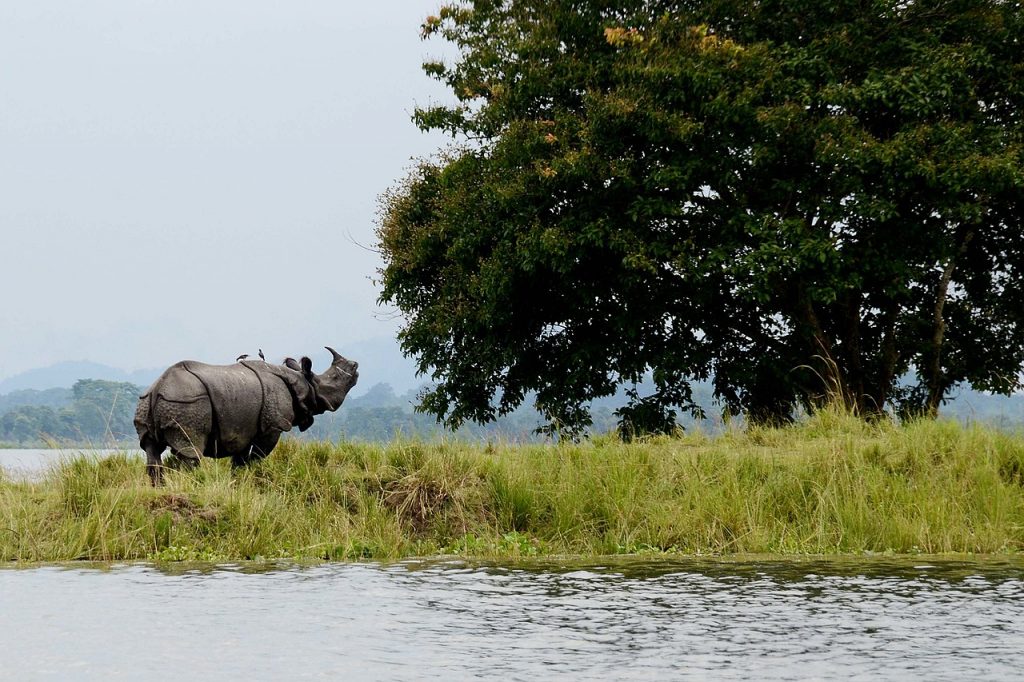
A Biodiversity Hotspot
Sprawling across approximately 860 square kilometers in Assam’s Golaghat and Nagaon districts, Kaziranga National Park is a mosaic of tall elephant grass, dense forests, and expansive wetlands. Its diverse landscape supports a thriving population of flora and fauna.
Rhinos: The Stars of Kaziranga
Kaziranga is most renowned for its population of Indian one-horned rhinoceros. In fact, it’s home to more than two-thirds of the world’s total population of this rare species. The sight of these massive, prehistoric-looking creatures grazing on the park’s grasslands is a remarkable and humbling experience.
Bengal Tigers and Other Wildlife
Beyond rhinos, Kaziranga shelters a diverse array of wildlife, including Bengal tigers, Indian elephants, Asiatic water buffaloes, and swamp deer. The park is also a birdwatcher’s paradise, with over 500 species of avian residents, including the great Indian hornbill and the endangered Bengal florican.
The Splendor of Wetlands
The wetlands within Kaziranga National Park, including vast expanses of swamps and lakes, are a crucial component of the park’s ecosystem. These wetlands support a thriving population of migratory birds during the winter months, making it a globally significant Important Bird Area.
Conservation Triumph: From Brink of Extinction to Prosperity
Kaziranga’s conservation success story is nothing short of remarkable. The park was established in 1905, primarily to protect the dwindling rhinoceros population. By the early 20th century, rampant poaching had reduced their numbers to a mere handful. However, with dedicated efforts, strict anti-poaching measures, and continuous vigilance, Kaziranga’s rhino population has rebounded, exemplifying the power of conservation.
Exploring Kaziranga National Park
To fully experience the wonders of Kaziranga, visitors can embark on a variety of safaris:
- Jeep Safari: Ideal for small groups and photography enthusiasts, jeep safaris offer the flexibility to explore the park’s diverse terrain.
- Elephant Safari: The most unique way to explore Kaziranga, elephant safaris provide a closer and quieter approach to wildlife.
- Birdwatching: Kaziranga’s wetlands are a paradise for birdwatchers, offering the chance to spot both resident and migratory species.
- Boat Safari: Exploring the park’s waterways by boat allows for a different perspective on its unique ecosystems.
Preservation and Conservation
Kaziranga National Park is more than just a tourist destination; it’s a testament to the dedication of countless individuals and organizations committed to preserving India’s natural heritage. Anti-poaching efforts, community involvement, and sustainable tourism practices are at the heart of the park’s conservation model.
Visiting Kaziranga National Park
To make the most of your visit to Kaziranga National Park, consider the following tips:
- Book Safaris in Advance: Safaris are in high demand, especially during peak seasons, so booking in advance is recommended.
- Respect Wildlife: Maintain a safe distance from animals and avoid making loud noises or sudden movements.
- Follow Park Rules: Comply with park regulations, including speed limits during safaris.
- Stay in Designated Accommodations: Choose from various lodges, resorts, and forest rest houses that contribute to conservation efforts.
Kaziranga National Park stands as a beacon of hope for wildlife conservation. Its flourishing rhino population and the overall health of its ecosystem are inspiring examples of what can be achieved when dedicated efforts are made to protect our planet’s precious biodiversity. As you explore this natural wonder, you’ll not only be captivated by its beauty but also reminded of the importance of safeguarding our shared natural heritage for future generations.
Sundarbans National Park: Where the Wild and Mystical Meet
In the southern part of West Bengal, where the mighty Ganges River merges with the Bay of Bengal, lies a realm of enchantment and mystique—the Sundarbans National Park. Known for its unique ecosystem, awe-inspiring biodiversity, and ethereal beauty, the Sundarbans is not just a national park; it’s a living, breathing testament to the wonder of nature.
The Enchanted Mangrove Forests
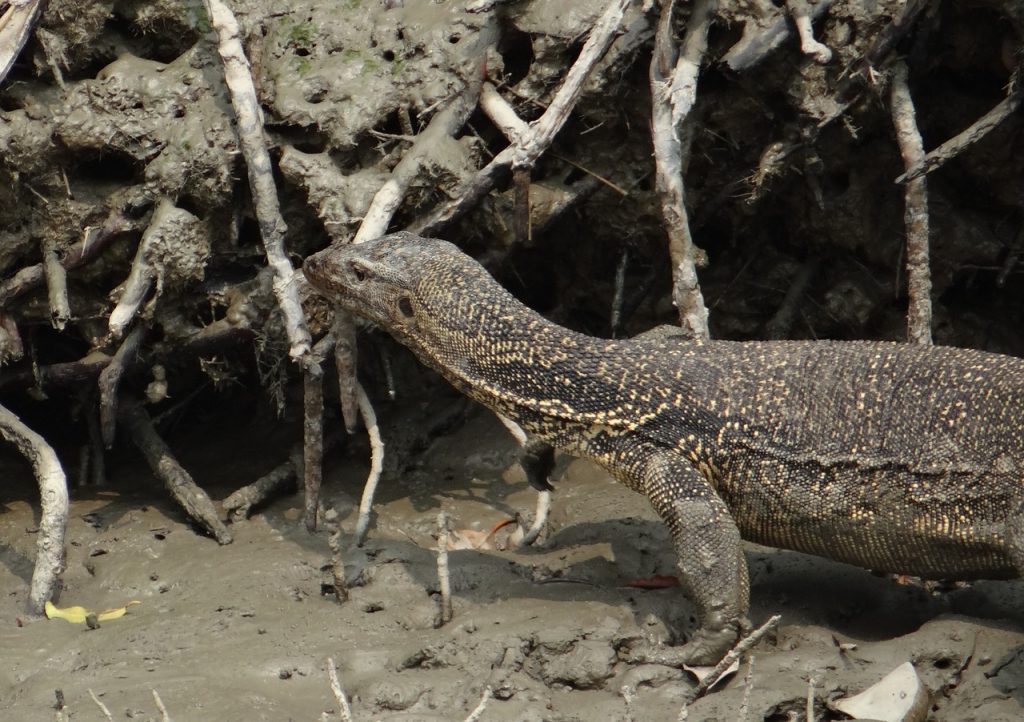
Spread over 10,000 square kilometers, the Sundarbans is the largest mangrove forest in the world. Its name, “Sundarbans,” translates to “beautiful forest,” a fitting description for this mesmerizing wilderness.
The Sundarbans’ distinctive landscape is characterized by a network of interlacing rivers, tidal waterways, and more than 80 islands. What sets it apart are the unique salt-tolerant mangrove trees, including the iconic sundari (Heritiera fomes), which gives the region its name.
A World of Biodiversity
Beneath the lush canopy of mangroves, the Sundarbans shelters an astonishing diversity of wildlife. Here, the mystical meets the wild:
- Royal Bengal Tigers: The Sundarbans is the realm of the elusive Royal Bengal tiger, where these magnificent creatures are skilled swimmers and have adapted to a semi-aquatic life. Spotting a tiger here is a rare and thrilling experience.
- Saltwater Crocodiles: The estuarine crocodile, also known as the saltwater crocodile, thrives in the brackish waters of the Sundarbans.
- Leopards: Leopards roam the islands and are an essential part of the park’s carnivore population.
- Birdlife: The Sundarbans is a birdwatcher’s paradise, home to a diverse array of avian species, including the globally endangered masked finfoot and the enigmatic brown-winged kingfisher.
- Mangrove Ecosystem: The park’s unique ecosystem supports a range of other fauna, including fishing cats, spotted deer, and wild boars.
Sailing Through the Mystical Waters
Exploring the Sundarbans is an adventure like no other. Visitors can navigate the park’s waterways by boat, immersing themselves in the tranquil and mystical ambiance of the mangrove forests. The echoing calls of exotic birds and the soft rustle of leaves are your companions on this ethereal journey.
Preservation and Conservation
The Sundarbans National Park is not just a natural wonder but also a UNESCO World Heritage Site and a Biosphere Reserve, highlighting its international significance. The park faces numerous challenges, including habitat loss and climate change. Conservation efforts, led by government agencies and non-profit organizations, are essential to protect this unique ecosystem and its inhabitants.
Visiting the Sundarbans National Park
To make the most of your visit to the Sundarbans, consider the following tips:
- Guided Tours: Opt for guided boat tours to explore the park safely and responsibly.
- Respect Wildlife: Keep a safe distance from animals and refrain from making loud noises.
- Eco-Friendly Practices: Follow eco-friendly practices, such as proper waste disposal, to minimize your impact on the environment.
- Staying Within the Park: There are forest rest houses and eco-friendly lodges within the Sundarbans where visitors can stay.
The Sundarbans National Park is a mystical realm where nature’s raw beauty meets the unknown. As you explore its serene waters and lush forests, you’ll not only be captivated by its enchanting allure but also reminded of the importance of preserving these invaluable ecosystems for generations to come.
Periar National Park: Kerala’s Verdant Wilderness and Tiger Haven
Nestled in the heart of Kerala’s pristine landscape lies a sanctuary of lush greenery and abundant wildlife: Periyar National Park. Situated in the southern Western Ghats, this protected area is a testament to nature’s resilience and the harmonious coexistence of wildlife and humanity.
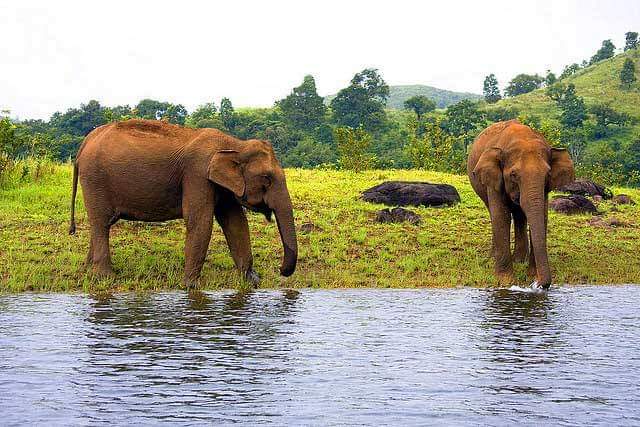
A Jewel in Kerala’s Crown
Spanning over 900 square kilometers, Periyar National Park is a verdant paradise encompassing both the Periyar Wildlife Sanctuary and the Thekkady Wildlife Sanctuary. It takes its name from the Periyar River, which winds through the park’s heart, nourishing its diverse ecosystems.
Wildlife Galore
Periyar National Park boasts a diverse range of flora and fauna, making it one of India’s most ecologically significant areas:
- The Majestic Tigers: Periyar is renowned for its Bengal tiger population. While these elusive big cats may be the park’s crown jewels, spotting them requires patience and a bit of luck.
- Elephants: Herds of Indian elephants, an emblematic species of the region, can be frequently seen bathing and foraging along the riverbanks.
- Gaurs: The park is home to the largest population of Indian bison, known as gaurs, which can often be spotted grazing in the grasslands.
- Leopards: Leopards, though elusive, also inhabit the park and are a significant part of the predator-prey balance.
- Diverse Birdlife: Periyar is a paradise for birdwatchers, with over 260 species of birds, including the Malabar grey hornbill, the great Indian hornbill, and the Nilgiri wood pigeon.
A Scenic Wilderness
The scenic beauty of Periyar National Park is awe-inspiring. The lush green forests, serene lakes, and mist-covered hills make it a perfect destination for nature enthusiasts and photographers. The artificial Periyar Lake, formed by the Mullaperiyar Dam, is at the heart of the park and adds a unique charm.
Safari Adventures
To explore Periyar’s wilderness and wildlife, visitors have a range of safari options:
- Boat Safari: The boat cruise on Periyar Lake offers a unique perspective and an opportunity to spot animals coming to the water’s edge.
- Jeep Safari: Guided jeep safaris provide a closer look at the park’s interior and are excellent for wildlife photography.
- Trekking: Guided trekking tours are available for those who prefer to explore on foot and immerse themselves in the forest’s beauty.
Conservation and Sustainability
Periyar National Park places a strong emphasis on conservation and sustainability. The park is an essential part of the Project Elephant and Project Tiger initiatives in India. Community-based conservation programs also involve local residents in protecting and preserving the park’s rich biodiversity.
Visiting Periyar National Park
To make the most of your visit to Periyar National Park, consider the following tips:
- Permits: Obtain the necessary permits for safaris and activities in advance.
- Respect Wildlife: Maintain a safe distance from animals and refrain from making loud noises.
- Eco-Friendly Practices: Follow eco-friendly practices, such as proper waste disposal and minimal environmental impact.
- Stay in Designated Accommodations: Choose from various lodges and resorts within or near the park that contribute to conservation efforts.
Periyar National Park in Kerala is not just a sanctuary for wildlife but also a sanctuary for the soul. As you traverse its tranquil waters and dense forests, you’ll not only encounter the wonders of the natural world but also gain a profound appreciation for the delicate balance of life in this verdant paradise.
Bandipur and Nagarhole National Parks: Karnataka’s Pristine Wilderness
In the heart of India’s southern state of Karnataka, amidst the Western Ghats’ lush greenery, lie two iconic national parks: Bandipur and Nagarhole. These pristine wilderness areas are not only a testament to the state’s rich biodiversity but also offer a glimpse into the enchanting world of India’s wildlife.
Bandipur National Park: A Royal Reserve
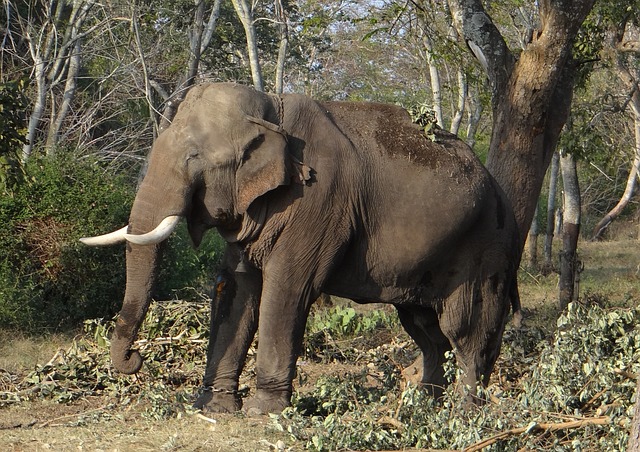
Nestled between the picturesque Western Ghats and the Nilgiri Mountains, Bandipur National Park is one of the most renowned wildlife sanctuaries in India. Originally the hunting grounds of the Maharajas of Mysore, it was declared a national park in 1974. Covering an expansive 874 square kilometers, Bandipur is a stunning expanse of deciduous forests, grassy meadows, and crystal-clear rivers.
The Roar of Tigers
Bandipur is most famous for its Bengal tigers. This charismatic big cat, often referred to as the “king of the jungle,” finds a thriving habitat here. Visitors have a reasonable chance of spotting these majestic creatures during guided safaris. Other predators like leopards, dholes (Indian wild dogs), and sloth bears also inhabit the park.
A Symphony of Birds
Birdwatchers will be delighted by Bandipur’s avian diversity. The park is home to over 200 species of birds, including the Malabar pied hornbill, the Indian grey hornbill, and the crested serpent eagle. Its vibrant birdlife makes it a paradise for ornithologists and photographers.
Nagarhole National Park: The Serene Waters
Adjacent to Bandipur lies the enchanting Nagarhole National Park, now known as Rajiv Gandhi National Park. Covering approximately 643 square kilometers, Nagarhole is characterized by its tranquil lakes, meandering streams, and dense forests. The name “Nagarhole” means “snake river,” derived from the winding course of the river that flows through it.
Elephant Abode
Nagarhole is famous for its robust population of Indian elephants. These gentle giants can often be seen leisurely grazing along the lush riverbanks or taking refreshing baths in the park’s water bodies. The park’s undisturbed forests and abundant vegetation provide an ideal habitat for these magnificent creatures.
A Wildlife Enclave
Apart from elephants, Nagarhole is home to a variety of wildlife. Spotted deer, sambar deer, barking deer, and Indian bison are a common sight. The park also shelters elusive predators like tigers, leopards, and wild dogs. For wildlife enthusiasts, Nagarhole offers an incredible blend of safari experiences.
Exploring the Wild
Both Bandipur and Nagarhole offer a range of safari options, including jeep safaris and boat safaris. Each of these safari experiences provides a unique perspective on the parks’ diverse ecosystems and inhabitants. The boat safaris in Nagarhole allow visitors to explore the tranquil Kabini River and spot wildlife by the water’s edge.
Preservation and Conservation
Both Bandipur and Nagarhole National Parks are dedicated to wildlife conservation. They are part of the Nilgiri Biosphere Reserve and play a crucial role in the preservation of the region’s unique biodiversity.
Visiting Bandipur and Nagarhole National Parks
To make the most of your visit to Bandipur and Nagarhole National Parks, consider the following tips:
- Permits: Obtain the necessary permits for safaris and activities in advance.
- Respect Wildlife: Maintain a safe distance from animals and avoid making loud noises or sudden movements.
- Eco-Friendly Practices: Follow eco-friendly practices, such as proper waste disposal and minimal environmental impact.
- Stay in Designated Accommodations: Choose from various lodges and resorts within or near the parks that contribute to conservation efforts.
Bandipur and Nagarhole National Parks in Karnataka offer a unique opportunity to connect with nature in all its glory. As you traverse their serene landscapes and encounter the wonders of the animal kingdom, you’ll gain a deep appreciation for the need to protect these pristine wilderness areas for generations to come.
Kanha National Park, Madhya Pradesh: A Wildlife Paradise
Nestled in the heart of India, Kanha National Park in Madhya Pradesh is a mesmerizing wilderness sanctuary that showcases the raw and untamed beauty of nature. Known for its stunning landscapes, diverse flora and fauna, and a rich cultural heritage, Kanha National Park has earned its reputation as one of India’s most prominent wildlife destinations. Let’s embark on a journey to explore the wonders of Kanha National Park.
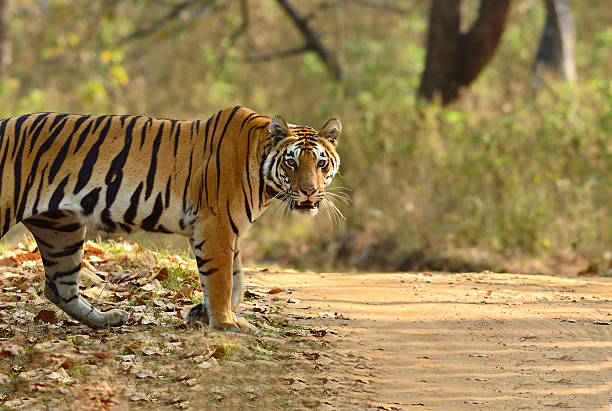
Location and Geography
Kanha National Park is situated in the Maikal Hills of the Satpura Range in the southern part of the state of Madhya Pradesh, India. It spans an area of approximately 940 square kilometers, making it one of the largest national parks in India. The park is divided into two main zones: the core zone and the buffer zone. The core zone is the primary area for wildlife conservation, while the buffer zone helps in providing a natural habitat for animals and supporting eco-tourism activities.
Flora and Fauna
Kanha National Park is renowned for its rich biodiversity, and it’s home to a wide variety of plants and animals. The lush forests are dominated by Sal trees, mixed with bamboo, and other tropical vegetation. The park’s diverse landscape, which includes meadows, plateaus, and dense forests, provides a perfect habitat for a range of wildlife species.
- Tigers: Kanha is famously known as one of the best places in India to spot the majestic Bengal Tiger. The park has a thriving tiger population, and visitors have a good chance of encountering these incredible creatures.
- Barasingha: The park is also home to the rare and endangered Hard Ground Barasingha, also known as the Swamp Deer. Kanha is one of the last bastions of this species.
- Leopards: Alongside tigers, leopards also roam the dense forests of Kanha. They are relatively elusive but occasionally make appearances.
- Sloth Bears: Kanha National Park is one of the best places to spot sloth bears in India. These shaggy creatures are often seen near water bodies.
- Indian Bison (Gaur): The park is home to a substantial population of Indian Bison, also known as Gaur. These massive herbivores are a sight to behold.
- Birdlife: Kanha is a paradise for bird enthusiasts. Over 300 bird species have been recorded here, including peafowl, eagles, vultures, and many migratory birds.
- Reptiles and Amphibians: Kanha also houses a variety of reptiles and amphibians, including pythons, cobras, and frogs.
Safari Experience
To truly experience the magic of Kanha National Park, one must embark on a safari adventure. The park offers both jeep safaris and elephant safaris, providing visitors with the opportunity to explore its diverse ecosystems, spot wildlife, and capture the beauty of nature through their lenses. Safaris are conducted in the morning and evening, with trained guides and naturalists accompanying visitors to ensure a safe and educational experience.
Conservation Efforts
Kanha National Park has played a pivotal role in the conservation of India’s endangered species, particularly the Bengal Tiger and the Hard Ground Barasingha. The park’s dedicated efforts in habitat preservation, anti-poaching measures, and community engagement have contributed significantly to the resurgence of these species.
Local Communities and Culture
The communities residing around Kanha National Park, including the Baiga and Gond tribes, have coexisted with the wildlife for generations. Their unique cultures and traditions are deeply intertwined with the natural world, making Kanha not just a wildlife destination but also a cultural one. Visitors have the opportunity to learn about these indigenous communities and their sustainable way of life.
To Conclude
Kanha National Park in Madhya Pradesh is a treasure trove of biodiversity and natural beauty. Its lush forests, thriving wildlife, and commitment to conservation make it a must-visit destination for nature enthusiasts, wildlife photographers, and anyone seeking an unforgettable wilderness experience. As you venture into this enchanting realm of flora and fauna, remember to do so responsibly, respecting the park’s rules and preserving its pristine charm for generations to come. Kanha National Park truly stands as a testament to India’s rich natural heritage.
Gir Forest National Park, Gujarat: The Last Abode of the Asiatic Lion
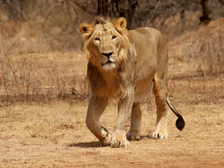
Gir Forest National Park, situated in the western Indian state of Gujarat, is a sanctuary of remarkable ecological and cultural significance. This protected area is renowned as the last refuge of the critically endangered Asiatic lion (Panthera leo persica) and offers a unique opportunity to explore India’s rich wildlife heritage. In this comprehensive guide, we will delve into the details of Gir Forest National Park, including its location, history, biodiversity, conservation efforts, and the experiences it offers to visitors.
Location and Geography
Gir Forest National Park is located in the Junagadh district of Gujarat, covering an extensive area of approximately 1,412 square kilometers. It is situated in the southwestern part of the Saurashtra peninsula and is characterized by a rugged landscape dominated by dry deciduous forests, rocky hills, and seasonal rivers. The park is flanked by the Arabian Sea to the southwest and agricultural fields to the north and east.
History and Significance
- Royal Hunting Grounds: Historically, Gir Forest was a royal hunting ground for the Nawabs of Junagadh. Lion hunting was once a popular activity among the nobility. However, this practice gradually led to a decline in the lion population.
- Conservation Initiatives: Recognizing the urgent need for lion conservation, the Nawab of Junagadh declared Gir as a protected area in 1900. It was one of the first instances of conservation efforts in India.
Biodiversity
Gir Forest National Park is celebrated for its diverse flora and fauna, with a focus on the conservation of the Asiatic lion. The park’s rich biodiversity includes:
- Asiatic Lions: The park is home to a significant population of Asiatic lions, estimated at over 500 individuals. This subspecies of lion is slightly smaller than its African counterpart and possesses a distinct fold of skin on its belly.
- Leopards: In addition to lions, Gir is also inhabited by leopards, which are elusive and primarily nocturnal creatures.
- Indian Deer Species: Gir is home to several species of deer, including the spotted deer (chital), sambar, and four-horned antelope (chousingha).
- Wildlife: Other wildlife species found in Gir include hyenas, jackals, sloth bears, and a variety of bird species, making it a haven for birdwatchers.
- Flora: The park’s vegetation primarily consists of dry deciduous forests with teak trees as the dominant species. Acacias, banyans, and a variety of shrubs and grasses also thrive here.
Conservation Efforts
Gir Forest National Park is renowned for its exemplary efforts in lion conservation. Some of the key conservation initiatives and practices include:
- Anti-Poaching Measures: Rigorous anti-poaching patrols and strategies are in place to protect the lions from poaching and retaliatory killings.
- Habitat Management: The park management focuses on habitat restoration and preservation, ensuring a sustainable ecosystem for lions and other wildlife.
- Community Involvement: Local communities are actively engaged in conservation efforts, and their cooperation is essential for the park’s success.
- Research and Monitoring: Ongoing research and monitoring programs help in understanding the lion population dynamics and health.
Visiting Gir Forest National Park
- Safari Tours: Visitors can explore the park on guided jeep and bus safaris, which provide an opportunity to spot lions and other wildlife.
- Birdwatching: Gir is a birdwatcher’s paradise, with a wide range of avian species to observe.
- Nature Trails: Some areas of the park have nature trails for those who prefer to explore on foot.
- Crocodile Breeding Center: Nearby, there is also a crocodile breeding center at Sasan Gir that is worth a visit.
Gir Forest National Park stands as a testament to successful wildlife conservation and the remarkable resilience of the Asiatic lion. Its unique ecosystem, rich biodiversity, and commitment to preserving a critical subspecies make it a must-visit destination for wildlife enthusiasts, photographers, and anyone interested in experiencing the wonders of India’s natural world. By safeguarding this last abode of the Asiatic lion, Gir Forest National Park continues to inspire and educate the world about the importance of wildlife conservation.
Tadoba Andhari Tiger Reserve, Maharashtra
Tadoba Andhari Tiger Reserve is one of the prominent tiger reserves located in the state of Maharashtra, India. It is situated in the Chandrapur district of Maharashtra and is named after two of its core components: the Tadoba National Park and the Andhari Wildlife Sanctuary. The reserve covers an area of approximately 1,727 square kilometers (666 square miles) and is a vital habitat for various wildlife species, including the Bengal tiger.
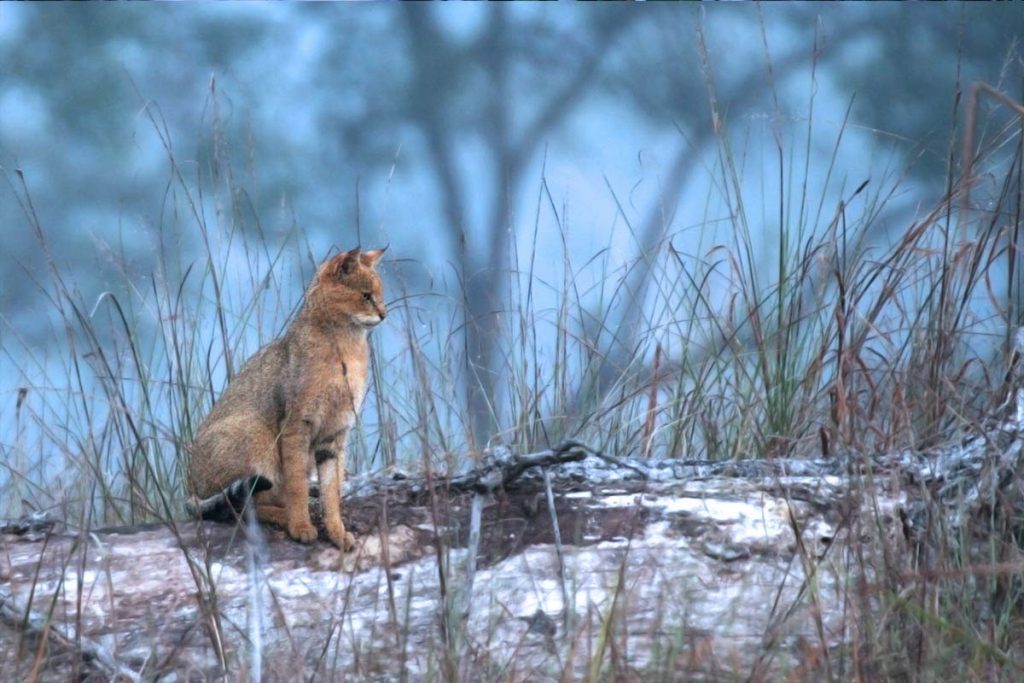
Details of Tadoba Andhari Tiger Reserve:
- Wildlife: Tadoba Andhari Tiger Reserve is renowned for its tiger population. It is home to a significant number of Bengal tigers, making it a popular destination for tiger enthusiasts and wildlife photographers. Besides tigers, the reserve also houses various other species of animals like leopards, sloth bears, Indian bison (gaur), wild dogs (dholes), sambar deer, spotted deer, and more.
- Birdlife: The reserve is a haven for birdwatchers, with over 200 species of birds recorded here. You can spot a variety of birds, including the Indian pitta, crested serpent eagle, grey-headed fish eagle, and many migratory birds during the winter months.
- Flora: Tadoba Andhari Tiger Reserve consists of diverse vegetation, including dry deciduous forests, bamboo thickets, and grasslands. The landscape is characterized by rugged terrain, hills, and numerous water bodies.
- Safari: Visitors can explore the reserve through jungle safaris, which are conducted in open vehicles. The safaris offer an excellent opportunity to observe the wildlife and their natural habitats. There are both morning and evening safari options available.
- Best Time to Visit: The best time to visit the Tadoba Andhari Tiger Reserve is during the winter months, from November to February, when the weather is cooler, and wildlife sightings are more common. The park remains closed during the monsoon season (July to September).
- Accommodation: The reserve offers various accommodation options, including forest rest houses, resorts, and hotels, catering to different budgets. Booking accommodations in advance is advisable, especially during peak tourist seasons.
- Conservation: Tadoba Andhari Tiger Reserve is dedicated to the conservation of tigers and other wildlife species. It is part of India’s Project Tiger initiative, which focuses on the protection and preservation of the endangered Bengal tiger.
- How to Reach: The nearest major city to Tadoba Andhari Tiger Reserve is Nagpur, which is well-connected by air, rail, and road. From City of Nagpur, you can hire a taxi or take a bus to reach the reserve.
Visiting Tadoba Andhari Tiger Reserve offers a unique opportunity to witness the majestic Bengal tiger in its natural habitat and experience the rich biodiversity of the region. It is an essential conservation area and a must-visit destination for wildlife enthusiasts and nature lovers.
Pench Tiger Reserve, Madhya Pradesh and Maharashtra
Pench Tiger Reserve, also known as Pench National Park, is a significant wildlife sanctuary located in both Madhya Pradesh and Maharashtra, India. It is named after the Pench River that flows through the park and serves as a natural boundary between the two states. The reserve spans an area of approximately 1,200 square kilometers (463 square miles) and is known for its rich biodiversity and tiger population.

Information about Pench Tiger Reserve:
- Wildlife: Pench Tiger Reserve is renowned for its thriving population of Bengal tigers. Apart from tigers, the reserve is home to a diverse range of wildlife, including leopards, Indian bison (gaur), sloth bears, wild dogs (dholes), sambar deer, spotted deer, barking deer, langurs, and a variety of bird species.
- Birdlife: The park is a paradise for birdwatchers, with over 285 species of resident and migratory birds. Commonly spotted birds include the Indian pitta, crested serpent eagle, white-eyed buzzard, and the Indian roller.
- Flora: The landscape of Pench Tiger Reserve is characterized by mixed deciduous forests, tropical dry deciduous forests, and open grasslands. It features a variety of plant species and dense teak forests.
- Safari: Visitors can explore the reserve through jungle safaris conducted in open vehicles. Both Madhya Pradesh and Maharashtra sides of the park offer safari options, and tourists can choose from morning and evening safaris. The chances of tiger sightings are relatively good during these safaris.
- Best Time to Visit: The best time to visit Pench Tiger Reserve is from October to June when the weather is more pleasant, and the wildlife is active. The park remains closed during the monsoon season (July to September).
- Accommodation: There are several accommodations available near Pench Tiger Reserve, ranging from luxury resorts to budget lodges and forest rest houses. Booking accommodations in advance is advisable, particularly during the peak tourist season.
- Conservation: Like many other tiger reserves in India, Pench Tiger Reserve is actively involved in tiger conservation efforts. It is part of the national Project Tiger initiative, which focuses on the protection and preservation of the Bengal tiger.
- How to Reach: Nagpur is the nearest major city and has an airport and a railway station. From Nagpur, Pench Tiger Reserve is accessible by road, and it takes a few hours to reach the reserve from the city.
Pench Tiger Reserve offers an exceptional opportunity to witness the majestic Bengal tiger and experience the diverse flora and fauna of central India. It is a popular destination for wildlife enthusiasts, photographers, and nature lovers, and it provides a unique blend of natural beauty and wildlife conservation efforts.
Hemis National Park, Ladakh
Hemis National Park, located in the Ladakh region of Jammu and Kashmir, India, is one of the largest national parks in the country. It covers an expansive area of approximately 4,400 square kilometers (1,700 square miles) and is known for its unique and pristine Himalayan landscape. Hemis National Park is a protected area and a vital habitat for several endangered and rare wildlife species.
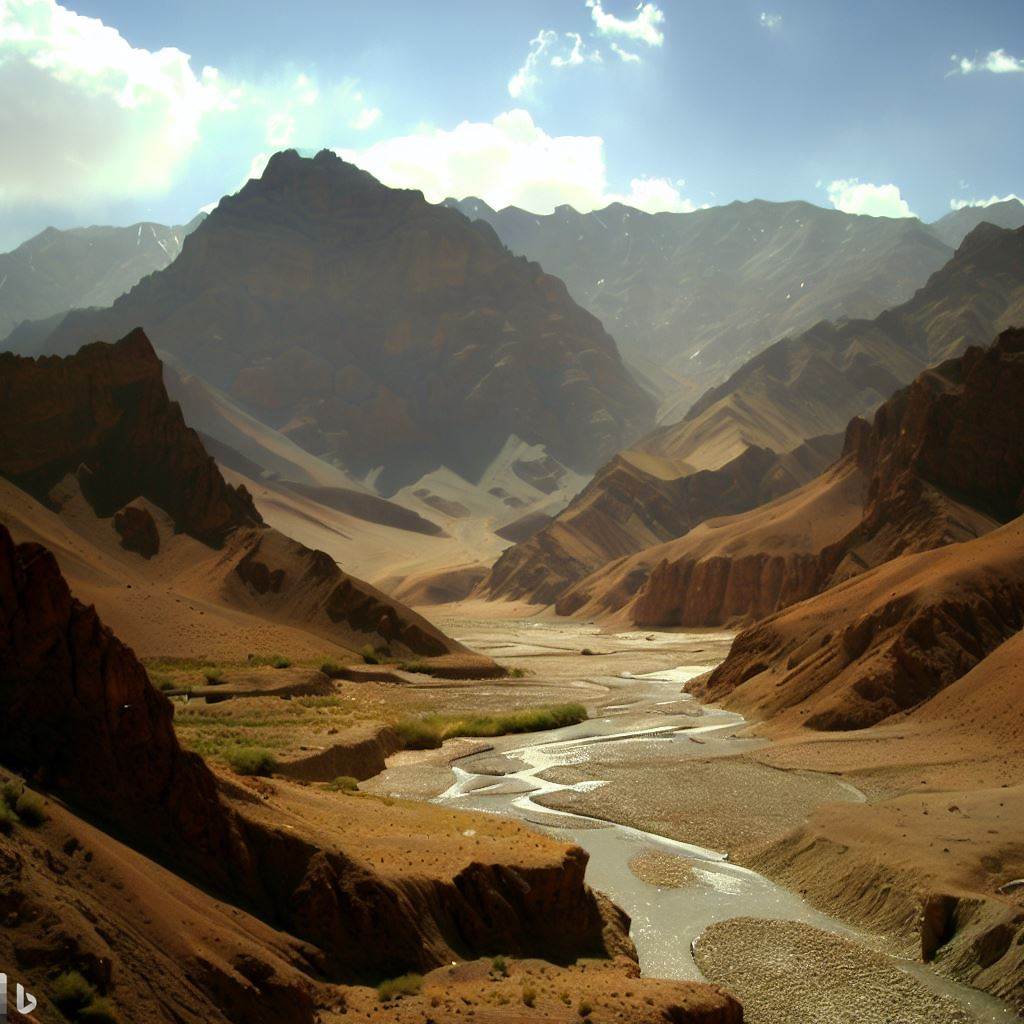
Key features and information about Hemis National Park:
- Wildlife: The park is famous for its snow leopards and is often considered one of the best places in the world to spot these elusive and endangered big cats. In addition to snow leopards, Hemis National Park is home to other wildlife species such as the Himalayan blue sheep (bharal), Asiatic ibex, Tibetan wolf, red fox, marmots, and various species of pheasants. It also serves as a breeding ground for the Tibetan argali sheep, which is one of the world’s largest sheep species.
- Birdlife: Hemis National Park is a paradise for birdwatchers, with over 200 species of birds recorded in the area. Some notable avian species found here include the bearded vulture, golden eagle, snow partridge, and Himalayan griffon vulture.
- Flora: The park’s landscape is characterized by high-altitude desert and alpine meadows. Vegetation is sparse due to the harsh climate and high elevation, but you can find species like juniper, willow, and seabuckthorn bushes.
- Trekking: The park offers trekking opportunities, and some popular trekking routes pass through its scenic terrain. The Rumbak Valley is a famous trekking destination within the park, known for its snow leopard sightings.
- Best Time to Visit: The best time to visit Hemis National Park is during the summer months, from May to September, when the weather is relatively mild, and wildlife is more active. However, the park remains closed during the winter months due to heavy snowfall.
- Festival: Hemis Monastery, located within the park, hosts the Hemis Festival, a two-day annual festival that celebrates the birth anniversary of Guru Padmasambhava. It features colorful mask dances, traditional music, and a large gathering of Buddhist monks and pilgrims.
- Conservation: Hemis National Park is a protected area and part of the broader conservation efforts for the snow leopard, an endangered species. It is also a designated UNESCO World Heritage Site within the “Central Asian Flyway” for migratory birds.
- Access: Leh is the nearest major town and is connected by air and road to other parts of India. Hemis National Park is accessible from Leh by road, and you can hire local guides and vehicles for wildlife safaris and treks.
Hemis National Park offers a unique opportunity to experience the high-altitude Himalayan ecosystem and observe rare and endangered wildlife, including the elusive snow leopard. It’s a must-visit destination for wildlife enthusiasts, trekkers, and nature lovers interested in the natural beauty and biodiversity of the Himalayas.
Dudhwa National Park, Uttar Pradesh
Dudhwa National Park is a protected wildlife sanctuary and national park located in the state of Uttar Pradesh, India. It is situated in the Lakhimpur Kheri district in the northeastern part of the state, bordering Nepal. Dudhwa National Park, along with the Kishanpur Wildlife Sanctuary, is part of the Dudhwa Tiger Reserve, which covers a combined area of approximately 1,284 square kilometers (496 square miles). The park is known for its diverse flora and fauna, including several endangered and vulnerable species.
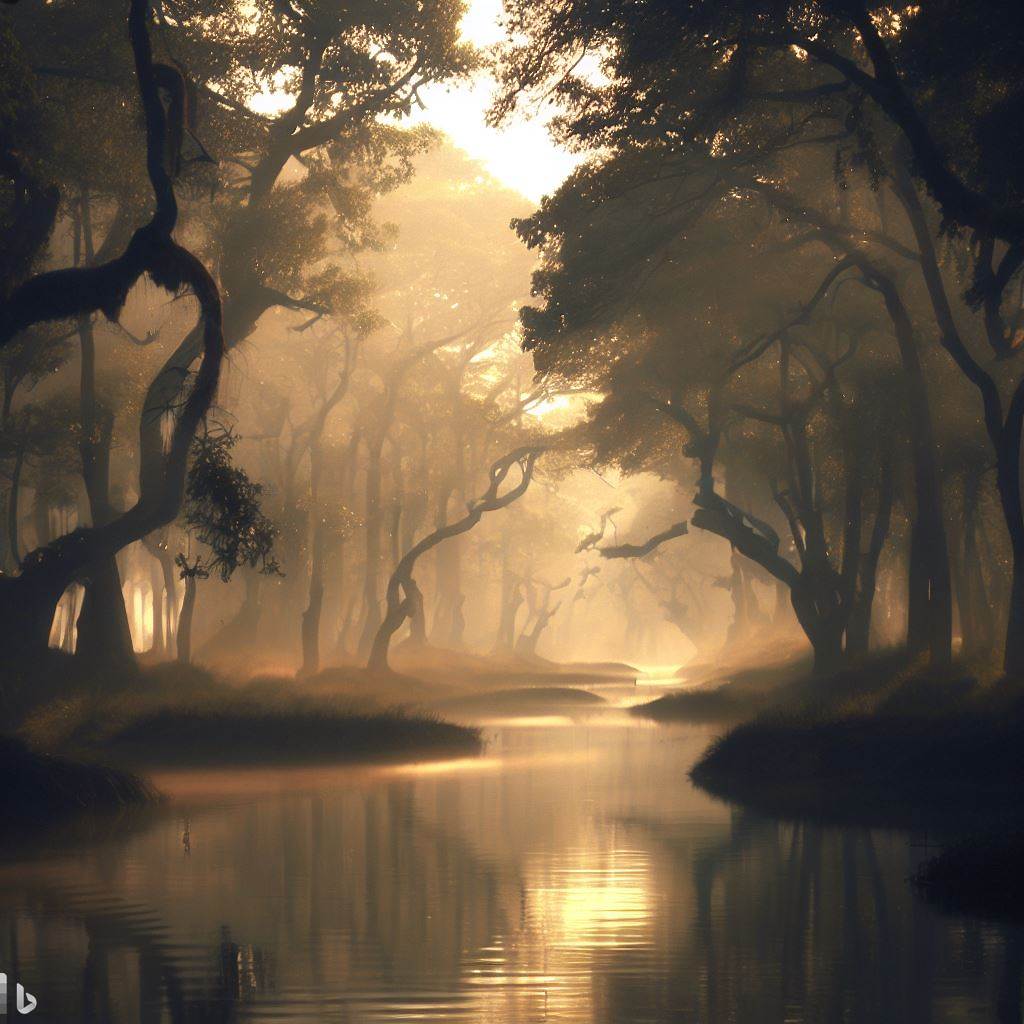
Key information about Dudhwa National Park:
- Wildlife: Dudhwa National Park is famous for its population of Bengal tigers. It’s one of the few places in India where you can spot the magnificent tiger in its natural habitat. In addition to tigers, the park is home to other wildlife species such as Indian rhinoceros, Indian elephants, swamp deer (barasingha), hog deer, spotted deer, sambar deer, sloth bears, leopards, and numerous bird species.
- Birdlife: The park is a paradise for birdwatchers, with over 450 bird species recorded here. Some of the notable avian species found in Dudhwa include the Bengal florican, greater adjutant stork, sarus crane, and several types of eagles and vultures.
- Flora: Dudhwa National Park is characterized by tall grasslands, dense forests, wetlands, and numerous water bodies. The Terai region of the park is known for its lush vegetation, including grasses, bamboo, and various tree species.
- Safari: Visitors can explore the park through jeep safaris and elephant safaris. These safaris provide an opportunity to observe the park’s wildlife in their natural habitat. The best time for wildlife viewing is during the early morning and late afternoon.
- Best Time to Visit: The best time to visit Dudhwa National Park is from November to June, with the winter months (December to February) being particularly popular. The park remains closed during the monsoon season (July to September).
- Accommodation: There are accommodation options available both within and near Dudhwa National Park, including forest rest houses and private lodges. It’s advisable to book accommodations in advance, especially during peak tourist seasons.
- Conservation: Dudhwa National Park is actively involved in the conservation of Bengal tigers, Indian rhinoceros, and other endangered species. It is part of India’s Project Tiger initiative, which focuses on tiger conservation.
- Access: The nearest town to Dudhwa National Park is Palia Kalan, which is well-connected by road to major cities in Uttar Pradesh and nearby states. The nearest railway station is Dudhwa, and the nearest airport is Lucknow, which is approximately 238 kilometers (148 miles) away.
Dudhwa National Park offers a unique opportunity to witness a wide variety of wildlife and bird species in a natural and relatively unspoiled environment. It is an excellent destination for wildlife enthusiasts and nature lovers seeking a wilderness experience in northern India.
Satpura Tiger Reserve, Madhya Pradesh
Satpura Tiger Reserve, located in the central Indian state of Madhya Pradesh, is one of the lesser-known but ecologically significant tiger reserves in India. Established in 1981, it covers an area of approximately 2,200 square kilometers (850 square miles) and is part of the larger Satpura Maikal landscape. Satpura Tiger Reserve is known for its rich biodiversity, rugged terrain, and opportunities for wildlife safaris and adventure.

Key information about Satpura Tiger Reserve:
- Wildlife: The reserve is home to a diverse range of wildlife species, including the Bengal tiger, Indian leopard, Indian bison (gaur), Indian elephant, sambar deer, spotted deer, barking deer, wild boar, and various species of primates. It also supports a healthy population of sloth bears and is known for its unique species like the Indian giant squirrel and Indian python.
- Birdlife: Satpura Tiger Reserve is a haven for birdwatchers, with over 250 species of birds recorded in the area. Some of the prominent bird species include the Indian paradise flycatcher, Malabar pied hornbill, crested serpent eagle, and the Indian pitta.
- Flora: The landscape of Satpura Tiger Reserve is characterized by a mix of dense forests, grasslands, and water bodies. It includes various types of forests like teak, sal, and bamboo, contributing to the rich biodiversity of the region.
- Safari: Visitors can explore the reserve through jungle safaris, walking safaris, boat safaris, and even elephant safaris. These safaris provide an opportunity to witness the wildlife and experience the natural beauty of the park.
- Best Time to Visit: The best time to visit Satpura Tiger Reserve is from October to June, with the winter months (November to February) being particularly pleasant. The park remains closed during the monsoon season (July to September).
- Accommodation: The reserve offers accommodation options ranging from budget lodges to luxury resorts. The main entry points for the reserve are Madhai and Pachmarhi, where you can find various places to stay.
- Conservation: Satpura Tiger Reserve is dedicated to the conservation of tigers and other wildlife species. It is part of India’s Project Tiger initiative, which focuses on the protection and preservation of the endangered Bengal tiger.
- Access: The nearest major town to Satpura Tiger Reserve is Hoshangabad, which is well-connected by road to other cities in Madhya Pradesh. The nearest railway station is Itarsi, and the nearest airport is Bhopal, which is approximately 180 kilometers (112 miles) away.
Satpura Tiger Reserve offers a unique opportunity to explore the untamed wilderness of central India, away from the more crowded and popular tiger reserves. It is an excellent destination for nature enthusiasts, wildlife photographers, and adventure seekers looking for a serene and offbeat wildlife experience.
Valley of Flowers National Park, Uttarakhand
Valley of Flowers National Park is a UNESCO World Heritage Site located in the Indian state of Uttarakhand. Situated in the Garhwal Himalayas in the Chamoli district, this national park is renowned for its stunning natural beauty, vibrant alpine meadows, and diverse floral diversity. The park is known for its unique ecosystem and is a popular destination for trekkers, nature enthusiasts, and botanists.

Detailed information about Valley of Flowers National Park:
- Floral Diversity: Valley of Flowers is famous for its diverse range of alpine flowers, making it a paradise for botany enthusiasts. The park blooms with a vibrant display of flowers during the monsoon season, roughly from June to September. Some of the notable flowers found here include the blue poppy, brahma kamal, cobra lily, and various species of orchids, primulas, and daisies.
- Wildlife: While the primary attraction is the floral diversity, the park is also home to a variety of wildlife species. Commonly spotted animals include the Himalayan blue sheep (bharal), Himalayan tahr, snow leopard, musk deer, and various bird species such as the Himalayan monal pheasant and various types of finches.
- Trekking: Valley of Flowers is a popular trekking destination. The trek usually starts from the village of Govindghat, and it takes you through lush forests, charming villages, and eventually into the stunning valley itself. The trek is relatively moderate in terms of difficulty, but it is essential to be prepared for varying weather conditions.
- Best Time to Visit: The best time to visit the Valley of Flowers National Park is during the monsoon season, from June to September, when the valley is covered in a carpet of colorful flowers. The park remains closed during the winter months due to heavy snowfall.
- Conservation: The park is a protected area and is managed by the Forest Department of Uttarakhand. It is dedicated to the conservation of its unique flora and fauna.
- Accessibility: The nearest town to Valley of Flowers is Joshimath, which is well-connected by road to major cities in Uttarakhand. The trek to the park starts from Govindghat, which is a short drive from Joshimath.
- Accommodation: There are limited accommodation options near the Valley of Flowers. Many tourists prefer to stay in Joshimath or Ghangaria, a base camp village that serves as a starting point for the trek to the valley.
- Permits: Visitors are required to obtain permits from the Forest Department to enter the Valley of Flowers National Park.
Valley of Flowers National Park is a natural wonder and a testament to the extraordinary beauty of the Himalayan region. Its breathtaking landscapes and unique floral diversity make it a must-visit destination for anyone interested in exploring the natural beauty of India’s high-altitude regions.
Manas National Park, Assam
Manas National Park is a UNESCO World Heritage Site and a prominent wildlife sanctuary located in the state of Assam in northeastern India. It is situated in the foothills of the eastern Himalayas and is known for its exceptional biodiversity, diverse ecosystems, and conservation efforts. Manas National Park is home to a wide variety of wildlife and offers a unique experience for nature enthusiasts and wildlife lovers.
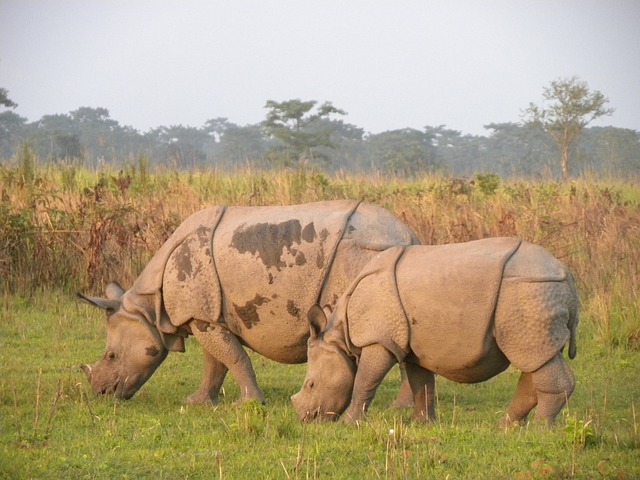
Details of Manas National Park:
- Wildlife: Manas National Park is renowned for its diverse wildlife, including several endangered and rare species. The park is home to the Bengal tiger, Indian rhinoceros, Indian elephant, wild buffalo, clouded leopard, golden langur, and many other mammals, reptiles, and bird species.
- Birdlife: The park is a birdwatcher’s paradise, with over 450 species of birds recorded here. Some of the notable avian species found in Manas National Park include the great hornbill, wreathed hornbill, pied hornbill, Bengal florican, and several species of eagles, owls, and kingfishers.
- Flora: The park’s landscape is characterized by grasslands, wetlands, deciduous forests, and riverine habitats. The diverse vegetation provides an ideal habitat for the park’s rich wildlife.
- Conservation: Manas National Park is actively involved in the conservation of its flagship species, particularly the Bengal tiger and the Indian rhinoceros. It is part of India’s Project Tiger initiative and plays a vital role in the conservation of these iconic species.
- Best Time to Visit: The best time to visit Manas National Park is from November to April when the weather is pleasant, and wildlife sightings are more likely. The park remains closed during the monsoon season (June to October) due to heavy rainfall and flooding.
- Safaris: Visitors can explore the park through jeep safaris and elephant safaris, providing excellent opportunities to observe the wildlife and the park’s scenic beauty.
- Accommodation: Manas National Park offers a range of accommodation options, including forest rest houses, tourist lodges, and private eco-resorts. It is advisable to book accommodations in advance, especially during the peak tourist season.
- Access: The nearest town to Manas National Park is Barpeta Road, which is well-connected by road to major cities in Assam. The nearest airport is Guwahati, which is approximately 176 kilometers (109 miles) away.
Manas National Park is not only a sanctuary for wildlife but also a place of immense natural beauty. Its lush landscapes, diverse wildlife, and commitment to conservation make it a must-visit destination for those interested in experiencing the unique and diverse ecosystems of northeastern India.
